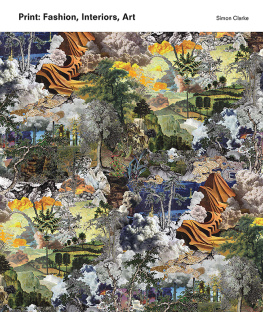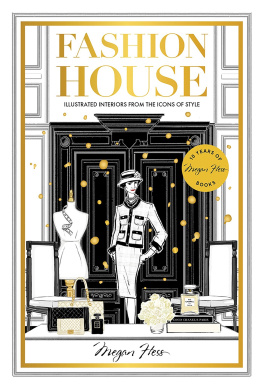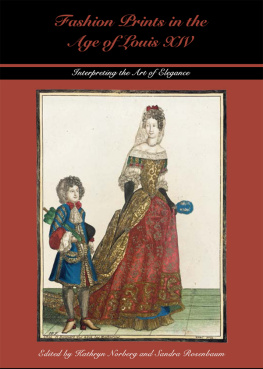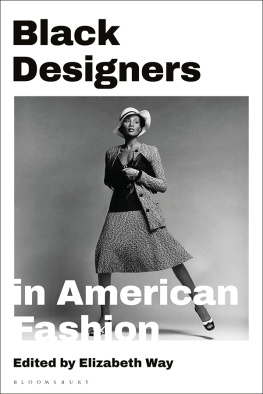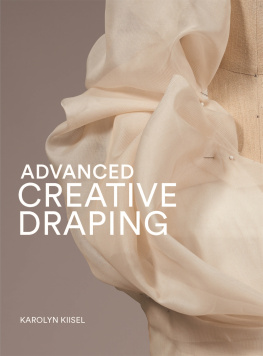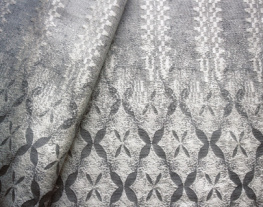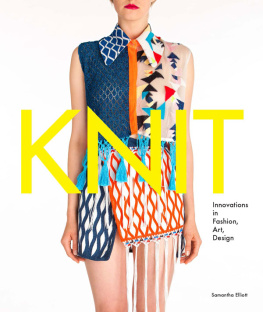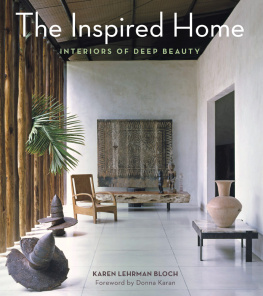Print: Fashion, Interiors, Art

Published in 2014 by
Laurence King Publishing Ltd
361373 City Road
London EC1V 1LR
United Kingdom
Tel: +44 20 7841 6900
Fax: +44 20 7841 6910
E-mail:
www.laurenceking.com
Copyright text 2014 Simon Clarke
Simon Clarke has asserted his right under the Copyright, Designs, and Patents Act 1988 to be identified as the author of this work.
All rights reserved. No part of this publication may be reproduced or transmitted in any form or by any means, electronic or mechanical, including photocopying, recording or any information storage or retrieval system, without permission from the publisher.
A catalogue record for this book is available from the British Library
ISBN: 978-1-78067-167-3
Design by Shaz Madani
Printed in China
Jacket illustration: Francesco Simeti, Hillside, 2011. Courtesy of the artist, Francesco Pantaleone Arte Contemporanea, Palermo, and Francesca Minini, Milan.
Print: Fashion, Interiors, Art
Simon Clarke
Laurence King Publishing
Contents
Introduction
From ancient times to the digital age, people have given expression to their imagination by making prints and patterns on the surfaces that surround them the clothes they wear, the spaces they inhabit, the art they create. In incremental developments, from block printing to digital printing, the narrative that unfolds through this tradition of design echoes the curiosity and inventiveness of both individuals and societies.
A significant stage in this story was the Industrial Revolution of the eighteenth and nineteenth centuries, a time of pioneering inventions that had a transformative impact on all aspects of society. This period revolutionized the technology of printing, especially for textiles, and was instrumental in the awakening realization of the economic benefits to be gained from design. The creation of the toile de Jouy, which depicts landscape and figures in a single colour on a plain ground, added value to mass production, and its popularity continues to this day. The contemporary revitalization of the style has been led by Glasgow-based designers Timorous Beasties, whose toiles depict urban life, warts and all, in the cities of Glasgow, London and New York.
The Arts and Crafts movement of the late nineteenth century, led by William Morris, represented a reaction against the Industrial Revolution and challenged mass production with quality and craftsmanship. The beliefs held by Morris and his peers are now embedded in heritage brands such as Liberty Art Fabrics, whose understanding of quality and imagination blend perfectly through excellence in manufacturing. Technology was particularly influential for print throughout the twentieth century, especially the impact of low-cost synthetic fabrics on printed textile design.
Today, in the early twenty-first century, a wide variety of printing techniques is used around the world, from the very basic to the most advanced, spanning traditional craft practices, industrialization and digitization. While certain historical and cultural subjects persist in print design, new motifs generated by innovations in photography, computer-aided design and the sciences represent a new wave of creative thinking, and suggest a potentially limitless range of possibilities in print. In the same vein, pattern in print is in a state of flux as digital printing has freed it from the conventional parameters of screen and rotary printing. While symmetry in pattern continues, traditional arrangements are reconfigured and newly interpreted, and asymmetries are frequently found in fashion in the form of engineered print designs. Pattern can be explored more broadly in wall panels, and prints made for corporate and domestic interiors increasingly feature a single image for maximum impact. These developments allow new visual rhythms and juxtapositions in pattern systems, which are in a state of deconstruction and reconstruction with few aesthetic limits. While repeat patterns are still popular, they are universally resolved through the use of computer-aided design.
Colour in print has similarly been liberated by technology, with digital innovation enabling a virtually unlimited palette to be used in a design or artwork. The psychology of colour remains important and the atmospheric, emotional and expressive nature it can convey is at play in contemporary print patterns. Colour is still applied to paper using conventional drawing and painting methods, but increasingly artwork is scanned into the computer before undergoing digital manipulation. Designing purely onscreen is increasingly common, with the results remaining entirely in the virtual world until they are realized as digital prints.
The work featured in this book encompasses a wide variety of substrates, from paper to organic, synthetic and blended fabrics through to non-woven materials such as vinyls. Experimental combinations of textiles with non-textile materials are also featured, such as the encasement of printed textiles between panels of glass in architectural constructions. The range of inks, dyes and foils used to apply motif, pattern and colour on to these substrates is broad. The technology available also allows for the efficient and functional use of printed materials in difficult contexts such as performance sportswear products.
In contemporary design and avant-garde art and craft practice, print in its most literal and broad forms consistently extends the conventional boundaries of the field. Hussein Chalayans conceptually driven symbolic and narrative-based prints bring an original vision to fashion through his individual interpretations of traditional cultural and contemporary themes. Basso & Brooke is another label redefining fashion print through its hyperreal visions of postmodern life. Maharam Digital Projects has created spectacular large-scale wall installations through collaborations with emerging and established artists, photographers, illustrators, fashion and graphic designers, who are resetting the perception of and relationship between art and design in interior settings. In fine art, Brigitte Zieger and Katja Davar convey feminist and political narratives through digital animations with backdrops and props borrowed from traditional print design to achieve dynamic and original results.
The ambition for this book is to showcase many of the most imaginative contemporary examples of print, used in a range of eclectic applications and settings. The work on show hails from around the world and represents many of the most creative and progressive designers, studios, artists and craftspeople working today in a breadth of styles and practices. While for ease the book is divided into the three sections of fashion, interiors and art, there are in fact recurring patterns and creative and technical interrelationships between these areas. It is notable that a number of the individual designers, studios and artists are active in their use of print across two, or all three, of these fields.
The personalities featured here bring originality and a sharp intellect to their creative practice, which they combine with considerable technical dexterity and ingenuity. The diverse nature of their products captures the Zeitgeist of postmodernism and the digital age. Needless to say, the work showcased here leaves us reflecting with much anticipation on what the future may hold, what science fictions and science facts lie ahead and what relevance, resonance and possibilities they may suggest for print.
Fashion
In the early part of the twenty-first century, a number of leading fashion and textile designers and ateliers are producing fashion prints that push the limits of creativity and extend the boundaries of the field. Here we present a selection of contemporary fashion practitioners who are making a significant contribution with their prints, and explore their ideas, working methods and individual interpretations of the fashion print.
Next page
